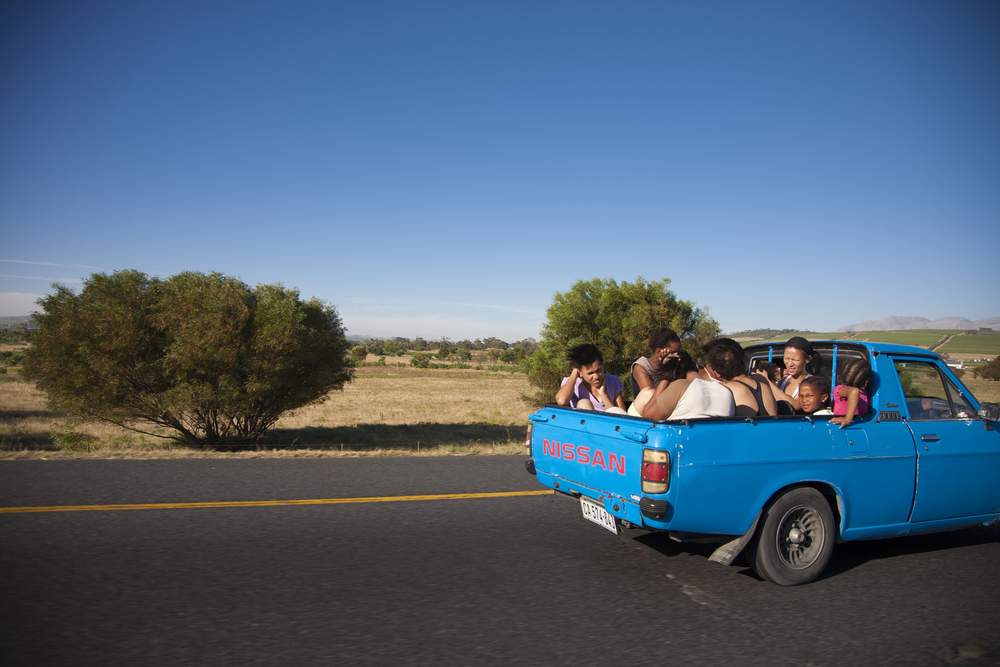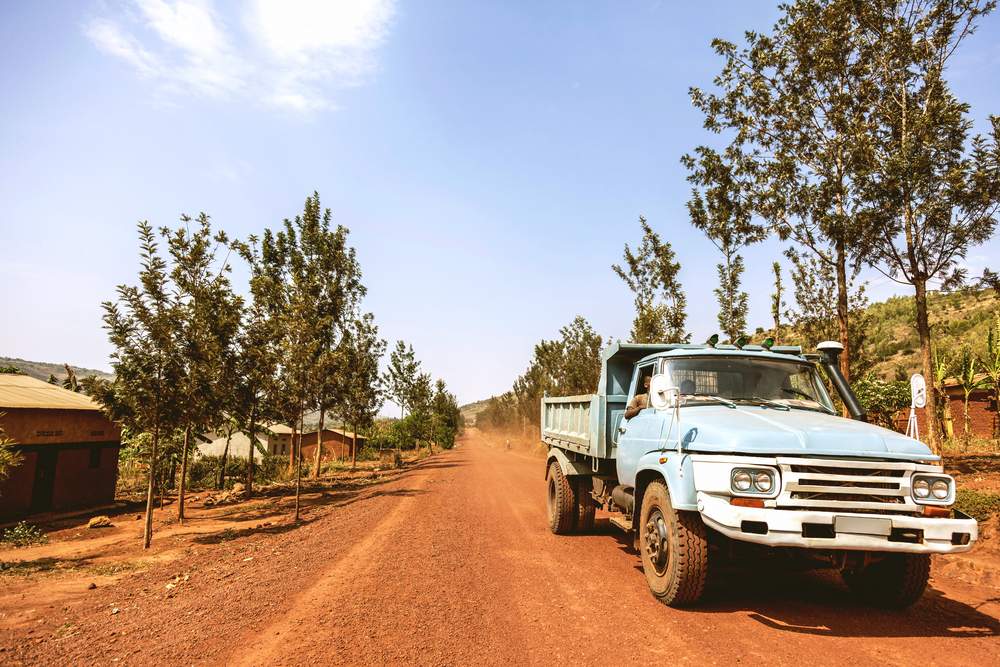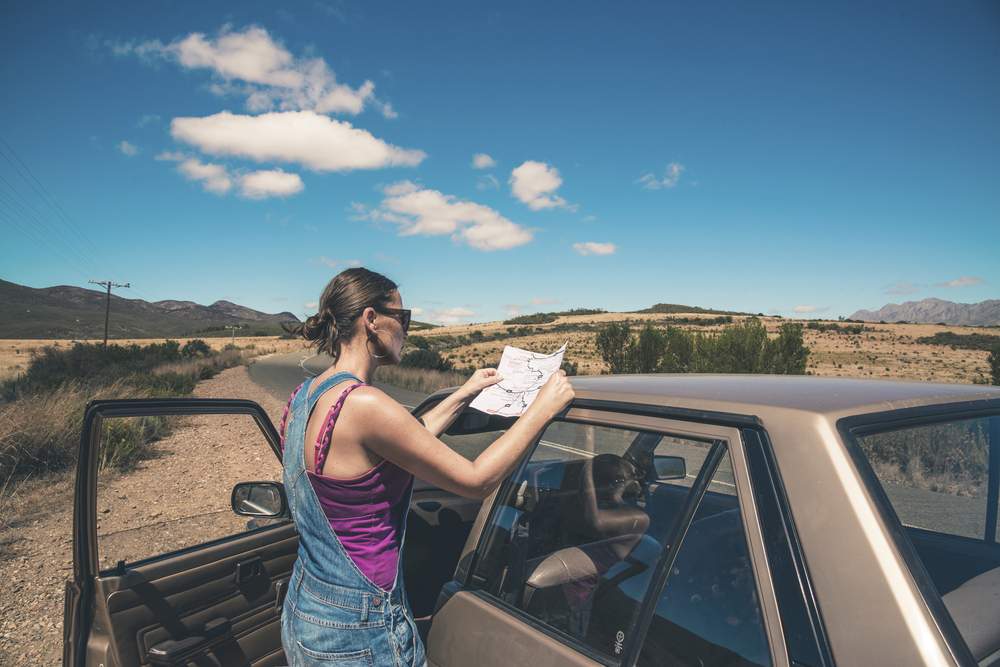Everyone knows that overland travel in Africa is cheap. The same four bucks that gets you a hamburger and fries at home can get you across some 500 kilometers of Namibian bush—often with change to spare. But road tripping can still be a tough sell despite this well-known fact.
That’s because once off the beaten path, African roads are notorious for their disrepair. Public buses and combis are overused, rundown, and oftentimes, downright dangerous. And while transportation timetables are almost always posted, things rarely run on time, which makes sticking to a schedule next to impossible.
Surprisingly, hitchhiking offers one of the best ways to avoid the headaches and the hassles of overland travel (especially since booking domestic flights or fancy tours can get expensive). Thumbing a ride has the potential to save both time and money, and because it puts travelers face to face with the local people, it often results in interesting travel tales.
“Informal transportation offers a unique opportunity to get off the tourist track and deep into regions where public transport rarely goes.”
Informal transportation offers a unique opportunity to get off the tourist track and deep into regions where public transport rarely goes. And while there are some risks that come with relying on strangers for rides (namely robbery and assault), hitchhiking can still be a safer alternative to a blown out tire in an overcrowded, overused vehicle.
If hitchhiking around Southern Africa sounds like a daunting task, think again. It may take a little work and a bit of patience, but most citizen drivers will happily give tourists a lift for a deep discount—often for free. Private cars offer more space and comfort than the typical mass transit options, too. With these simple tips, even the most timid of travelers will be flagging down cars and arriving at their destinations in next to no time.
What to Pack

Informal rides have the potential to be great. I know travelers who have successfully hitched through Namibia’s Etosha, Chobe National Park, and from South Africa to Mozambique without ever dropping a dime. They’ve met farmers from Zimbabwe, truckers from Pretoria, and fellow travelers from the UK.
But waiting isn’t always fun. I’ve spent mere minutes on the roadside of Namibia under the cool shadow of a shade tree. But I’ve also spent hours on a Botswana roadside with no relief from the blazing hot sun. With hiking, it’s always a gamble. And it’s always best to get to the roadside early to maximize daylight hours.
Depending on the destination, traffic can be light and the waiting period long. It’s best to be prepared by packing the following items:
- A full bottle of water to prevent dehydration
- Snacks for when afternoon hunger hits
- Sunscreen and a hat for those mid-day stretches where the sun can be relentless
- A book to help pass the time
- A fully-charged cell phone in case of emergency
- A tent
This last item isn’t essential, but I’ve found it can make hitchhiking a lot less stressful. People who travel with tents are more likely to get out of unsafe rides (even in the middle of nowhere), knowing they always have a place to sleep. And flagging a ride as it gets towards dark feels a lot less desperate if there’s a place to crash in that pack on your back.
Read: Is Hitchhiking Unethical?
How to Find a Ride

There are two basic approaches to posting up: the traditional, and the man on the street. One allows the rides to come to the traveler, and the other works best if the traveler goes directly to the rides. Both can be equally successful. Choosing a strategy is just a matter of personal preference.
Traditional Approach
The traditional approach is my personal favorite. Perfected on the highways of America in the 1960s, it evokes images of rucksacks tossed on roadsides with thumbs waving high in the air. It’s quintessential hitchhiking, and in Southern Africa, it’s the way things are usually done. I love this approach because only interested parties actually stop. And since travelers station themselves on the road heading in the direction they want to move, there’s no time wasted chatting up drivers who are going the opposite way.
“Always ask where a car is headed first, rather than offering up a destination.”
It’s best to feel out the drivers through a quick conversation that allows time to not only get a read on the ride, but also assess the vehicle for safety. Always ask where a car is headed first, rather than offering up a destination. This makes it easier to bow out gracefully if the driver seems suspect or the tire treads are worn low.
Man on the Street
Man on the street, which took its name from an old reporter’s method of interviewing random people on the street for stories that needed local color, is a more active way to search for a ride. It’s ideal for people who don’t like to wait or want to avoid the isolation of the roadside. Though less common in practice, man on the street allows hikers to actively participate in finding a ride by approaching drivers while they fuel up at petrol stations.
“Man on the street can also be a safer alternative for female hikers, first-timers, or those going solo, because all of the wait time happens in a public place.”
This strategy is great because travelers only talk to the drivers they’re willing to ride with. It allows people to scope things out in advance, instead of on the fly. Man on the street can also be a safer alternative for female hikers, first-timers, or those going solo, because all of the wait time happens in a public place.
Unfortunately it can be hard to gauge which direction drivers are going from the confines of a parking lot. This means there’s potential for more time wasted talking to people taking a different route. Enlist the help of pump attendants to speed the process, since most are eager to help travelers get on their way.
Where to Find a Pickup

Location is everything. It’s the first rule of real estate, and it’s definitely the most important rule of hitchhiking in Southern Africa. Placement on the road is almost as important as the technique and approach. So, consider finding the perfect spot the first step in securing the perfect ride.
Those who prefer the traditional approach should avoid taxi rinks and bus loops when preparing for the waiting game. It’s easy to get caught up in the public transport shuffle, and it’s unlikely citizen drivers will bother to stop in a place where they’ll have to compete with professionals to make you a passenger.
“The best waiting spots are out in the open and on a road that’s heading in the right direction.”
Instead, trek to the outskirts of town where it’s less likely to be confused with a lost tourist or a wandering weirdo. The best waiting spots are out in the open and on a road that’s heading in the right direction. It also helps to be near a shoulder or some other clearing that makes it easy for cars to pull off the main road. Hitchhiking is legal in most places, but it’s best to avoid waiting in areas where “no hiker” signs are posted.
“…find a petrol station or grocery store on the outskirts of town near the road that’s headed in a direction they’d like to travel.”
Travelers who prefer to hitchhike using the man on the street method should find a petrol station or grocery store on the outskirts of town near the road that’s headed in a direction they’d like to travel. This should help to cut down on time wasted talking to citizen drivers taking another route. It’s okay to wait by the storefront or petrol station door, but it’s more effective to stay mobile and move from car to car. Let attendants know the destination and enlist them to point out the drivers headed that way.
Rules of the Ride

Most citizen drivers in Southern Africa are willing to give deep discounts on a lift or even offer a ride for free. It’s best to settle up ahead of time to avoid later frustration. Get an idea of the price by talking to taxi drivers or petrol station attendants, and use this as a guideline for negotiating on the road. Otherwise, calculate the price of gas to travel the distance and divide by two (or the number of passengers) to determine a fair share of the cost.
“…calculate the price of gas to travel the distance and divide by two (or the number of passengers) to determine a fair share of the cost.”
People on the clock love to pick up hikers because chatting it up helps pass the time. Mack Trucks can be a comfortable, if slow, alternative to cars. Since they often travel long hauls, across entire countries and over borders, it can make getting from point A to point B on a single lift a breeze. Because commercial drivers are already getting paid, it’s easier to negotiate a low price—if there’s a price to pay at all.
Be aware that it’s illegal for government vehicles like Ministry of Youth, Ministry of Health, or Ministry of Education to collect money from hikers. It’s perfectly acceptable to refuse payment if it’s requested.
Staying Safe

It’s great to save a few bucks, but it’s also important to stay safe (just ask your mother). At its heart, hitchhiking is essentially taking a ride from a stranger. Therefore, it does pose some potential risks—assault and robbery being just two. But the chance of these things happening is slim for people who travel smart.
Hike in pairs whenever possible. Having a friend lowers the risk of someone trying to take advantage. Talk to drivers as much as possible before accepting a ride. In Southern Africa most people speak at least some English, which makes getting a read on the person and their intentions a whole lot easier. Females should avoid getting a lift in cars with multiple men and instead opt for families and individuals. Sadly, drinking and driving go hand in hand in Southern Africa, so be sure the driver is sober before getting in the car.
“Females should avoid getting a lift in cars with multiple men and instead opt for families and individuals.”
If you plan on hitchhiking on your trip, leave the fancy electronics at home. Keep your valuables and your passport on you at all times, and don’t flash large amounts of cash around.
If things start to feel sketchy—if they’re driving too fast or start to drink—trust your gut. Never hesitate to get out of a ride that feels unsafe. Pull over, get out, and pitch that tent. Another ride will come eventually, and it’s always better to be safe than to take unnecessary risks.
Check out more articles and resources for hitchhiking and traveling in Southern Africa:

Photo Credits: sifkigali / Shutterstock.com, Authentic_travel / Shutterstock.com, paul prescott / Shutterstock.com, Michel Piccaya / Shutterstock.com





